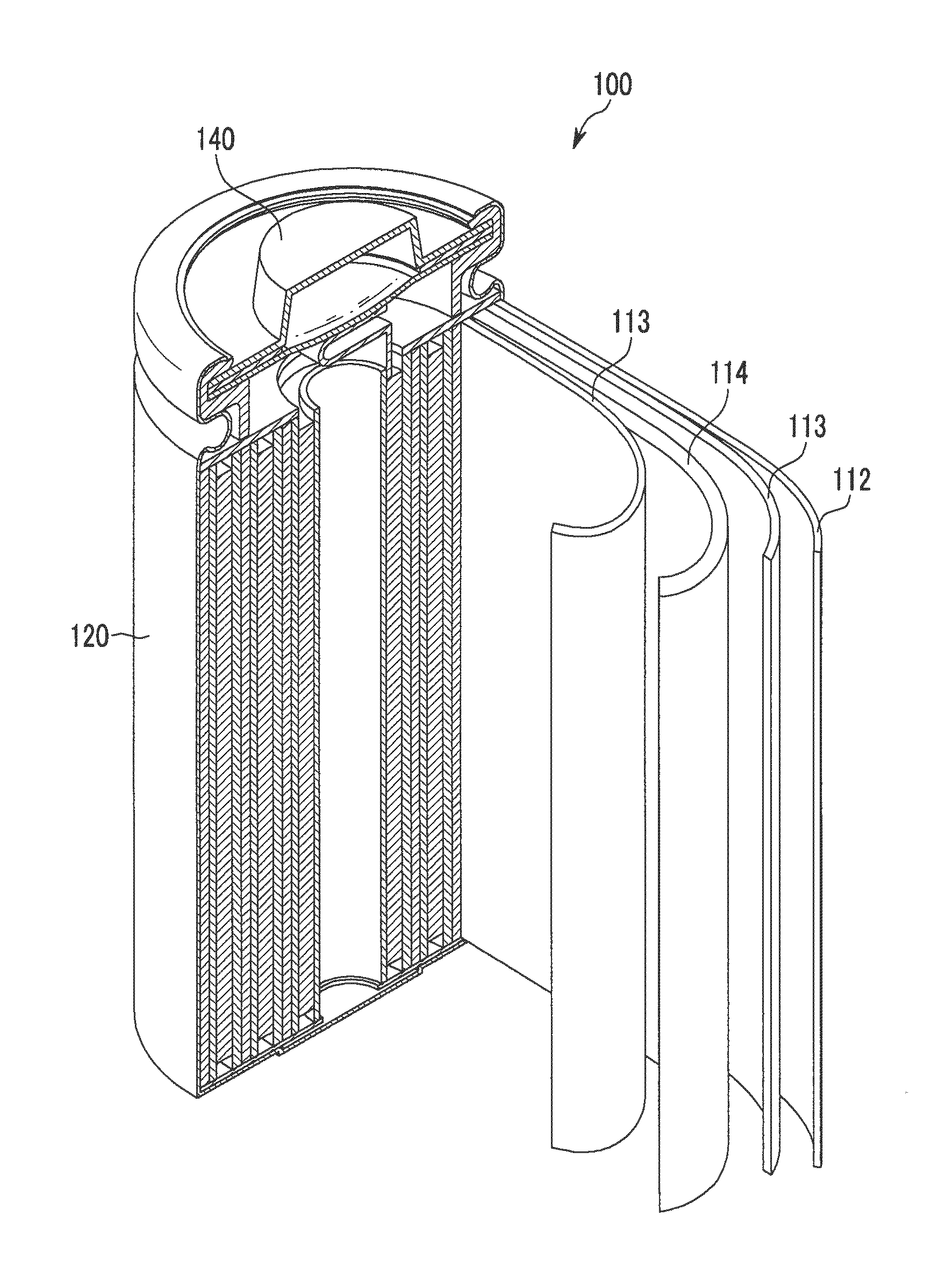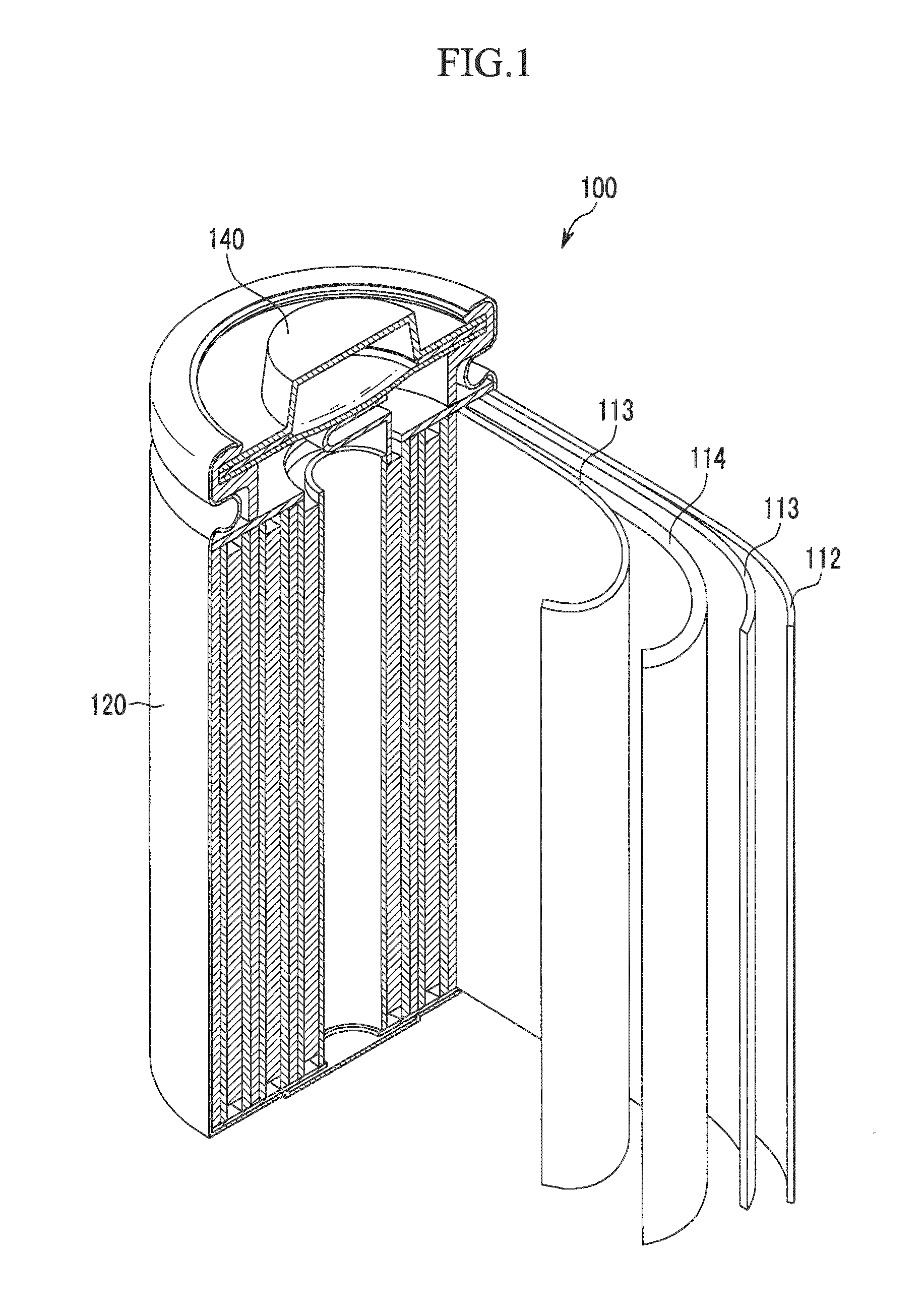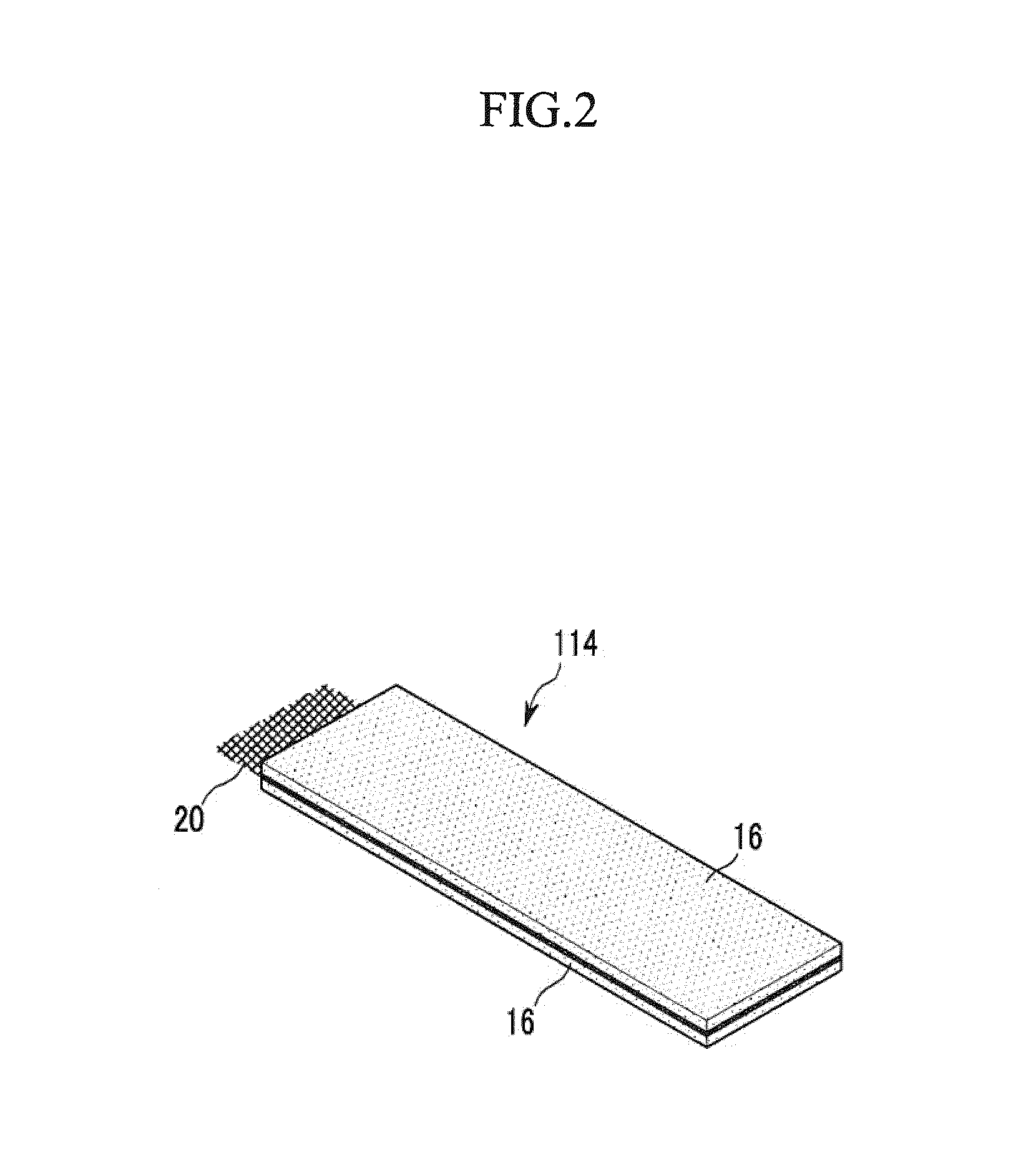Positive electrode for rechargeable lithium battery, method for manufacturing the same, and rechargeable lithium battery including the same
a rechargeable lithium battery and positive electrode technology, applied in the direction of positive electrodes, cell components, cell component details, etc., can solve the problems of poor conductivity, surface cracks, negative influence of rechargeable lithium batteries, etc., and achieve the effect of minimizing cracks
- Summary
- Abstract
- Description
- Claims
- Application Information
AI Technical Summary
Benefits of technology
Problems solved by technology
Method used
Image
Examples
example 1
[0062]85 wt % of LiMn2O4 as a positive active material, 10 wt % of polyvinylidene fluoride and polyvinyl acetate as a binder, and 5 wt % of carbon black as a conductive material were mixed together. The mixture was dispersed into N-methyl-2-pyrrolidone, preparing a composition for forming a positive active material layer. Herein, the binder was prepared by mixing 90 wt % of a first binder and 10 wt % of a second binder.
[0063]Then, the composition for forming a positive active material layer was coated on a glass plate to form a positive active material layer. Next, the positive active material layer was disposed on both sides of a 20 μm-thick aluminum net-type current collector and then hot-pressed at 150° C. with a presser, fabricating a positive electrode with an electrical conduction network. Herein, the positive electrode was 400 μm thick before the hot-pressure and 200 μm thick after the hot-pressure.
example 2
[0064]85 wt % of LiMn2O4 as a positive active material, 10 wt % of polyvinylidene fluoride as a binder, and 5 wt % of carbon black as a conductive material were mixed together. The mixture was dispersed into N-methyl-2-pyrrolidone, preparing a composition for a positive active material layer.
[0065]The composition for forming a positive active material layer was coated on a glass plate to form a positive active material layer. The positive active material layer was disposed on both sides of a net-type 20 μm-thick aluminum current collector and pressed at 150° C. with a hot-presser, fabricating a positive electrode with an appropriate electrical conduction network. Herein, the positive electrode was 400 μm thick before the hot-pressure and 200 μm thick after the hot-pressure.
experimental example 1
Electrochemical Characteristic Evaluation of the Rechargeable Lithium Battery Cells
[0070]The rechargeable lithium battery cells fabricated according to Examples 1 and 2 and Comparative Example 1 were charged and discharged at a 0.1 C rate in a potential region ranging from 3.0 to 4.3 V in order to evaluate the characteristics. The results are shown in FIG. 5, a graph showing charge and discharge characteristics of half-cells according to Examples 1 and 2 and Comparative Example 1.
[0071]Referring to FIG. 5, the half-cell of Example 1 had discharge capacity of about 103.3 mAh / g, the one of Example 2 had discharge capacity of about 93.8 mAh / g, and the one of Comparative Example 1 had discharge capacity of about 55.7 mAh / g, which shows that a battery cell including a positive electrode fabricated by hot-pressing a net-type current collector had large capacity.
[0072]In addition, the half-cells according to Examples 1 and 2 turned out to have higher discharge potential than the one of Com...
PUM
| Property | Measurement | Unit |
|---|---|---|
| thickness | aaaaa | aaaaa |
| thick | aaaaa | aaaaa |
| thick | aaaaa | aaaaa |
Abstract
Description
Claims
Application Information
 Login to View More
Login to View More - R&D
- Intellectual Property
- Life Sciences
- Materials
- Tech Scout
- Unparalleled Data Quality
- Higher Quality Content
- 60% Fewer Hallucinations
Browse by: Latest US Patents, China's latest patents, Technical Efficacy Thesaurus, Application Domain, Technology Topic, Popular Technical Reports.
© 2025 PatSnap. All rights reserved.Legal|Privacy policy|Modern Slavery Act Transparency Statement|Sitemap|About US| Contact US: help@patsnap.com



